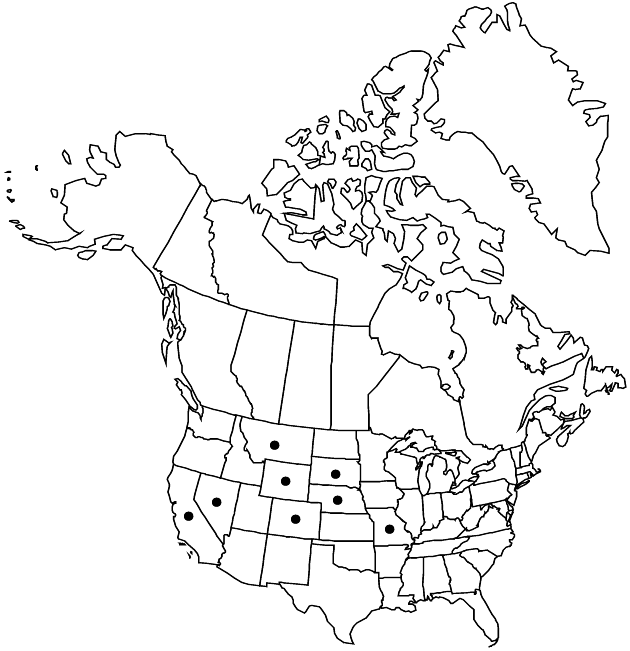Difference between revisions of "Cirsium canescens"
Trans. Amer. Philos. Soc., n. s. 7: 420. 1841.
FNA>Volume Importer |
imported>Volume Importer |
||
| (One intermediate revision by the same user not shown) | |||
| Line 8: | Line 8: | ||
}} | }} | ||
|common_names=Platte or prairie thistle | |common_names=Platte or prairie thistle | ||
| + | |special_status={{Treatment/ID/Special_status | ||
| + | |code=E | ||
| + | |label=Endemic | ||
| + | }} | ||
|basionyms= | |basionyms= | ||
|synonyms={{Treatment/ID/Synonym | |synonyms={{Treatment/ID/Synonym | ||
| Line 59: | Line 63: | ||
|publication title=Trans. Amer. Philos. Soc., n. s. | |publication title=Trans. Amer. Philos. Soc., n. s. | ||
|publication year=1841 | |publication year=1841 | ||
| − | |special status= | + | |special status=Endemic |
| − | |source xml=https:// | + | |source xml=https://bitbucket.org/aafc-mbb/fna-data-curation/src/2e0870ddd59836b60bcf96646a41e87ea5a5943a/coarse_grained_fna_xml/V19-20-21/V19_78.xml |
|tribe=Asteraceae tribe Cardueae | |tribe=Asteraceae tribe Cardueae | ||
|genus=Cirsium | |genus=Cirsium | ||
Latest revision as of 19:56, 5 November 2020
Biennials or monocarpic perennials, 20–100 cm; taproots long. Stems usually 1, erect, ± densely gray-tomentose with fine, non-septate trichomes; branches 0 or few, usually above middle in distal 1/2, ascending. Leaves: blades oblong to elliptic or obovate, 10–25(–40) × 2–6(–12) cm, coarsely dentate or shallowly lobed to deeply pinnatifid, lobes well separated, triangular to linear or oblong, often revolute-margined, ascending to spreading, spinulose to spinose-dentate, main spines 2–3(–10) mm, faces gray-tomentose, more densely abaxially, sometimes glabrate adaxially; basal usually present at flowering, winged-petiolate; principal cauline progressively reduced distally, bases decurrent as spiny wings 1–5 cm, sometimes with expanded auricles; distal cauline usually much reduced, less lobed. Heads 1–10+, terminal on branches or in distal axils, in openly corymbiform to racemiform arrays. Peduncles 0–10 cm. Involucres hemispheric to broadly campanulate, usually truncate or indented at base, 3–4 × 2.5–4 cm in first-formed heads, often smaller (1.5–2 cm) in later ones, loosely arachnoid on phyllary margins or glabrate. Phyllaries in 6–9 series, imbricate, ovate-lanceolate (outer) to linear-lanceolate (inner), abaxial faces with prominent glutinous ridge; bodies of outer and middle appressed, acute, spines ascending to spreading, 2–4(–8) mm; apices of inner expanded and flat, often twisted, scabrid-margined, and erose, spineless. Corollas dull white or lavender-tinged, 20–35 mm, tubes 10–17 mm, throats 6–11 mm, lobes 4–9 mm; style tips 5–8 mm. Cypselae light brown, 5–7 mm, sometimes with darker streaks, apical collar very narrow, lighter colored; pappi 18–30 mm, usually noticeably shorter than corolla. 2n = 34, 36.
Phenology: Flowering spring–summer (May–Aug).
Habitat: Sandy or gravelly soils in short-grass prairie, often in disturbed areas, mountain meadows, grassy slopes in montane coniferous forests
Elevation: 1100–3800 m
Distribution

Calif., Colo., Mo., Mont., Nebr., Nev., S.Dak., Wyo.
Discussion
Cirsium canescens grows in the northern Great Plains from eastern Montana and Wyoming to eastern Colorado and Nebraska; an upland race occurs in the Rocky Mountains of eastern Colorado. It has been reported from Iowa, North Dakota, and Ohio; I have not seen specimens from those states. It is adventive in northeastern California.
Cirsium canescens hybridizes locally with C. scariosum and C. parryi. Further investigations may reveal that high-elevation forms of C. canescens from the mountains of Colorado are worthy of taxonomic recognition. These plants flower later than the low elevation forms of the Great Plains and occur in rather different ecologic conditions, but I have found no features that readily distinguish them. Populations of C. canescens have been particularly affected by the seedhead weevil Rhinocyllus conicus, introduced to North America to control weedy species of Carduus (S. M. Louda et al. 1997; Louda 1998).
Selected References
None.